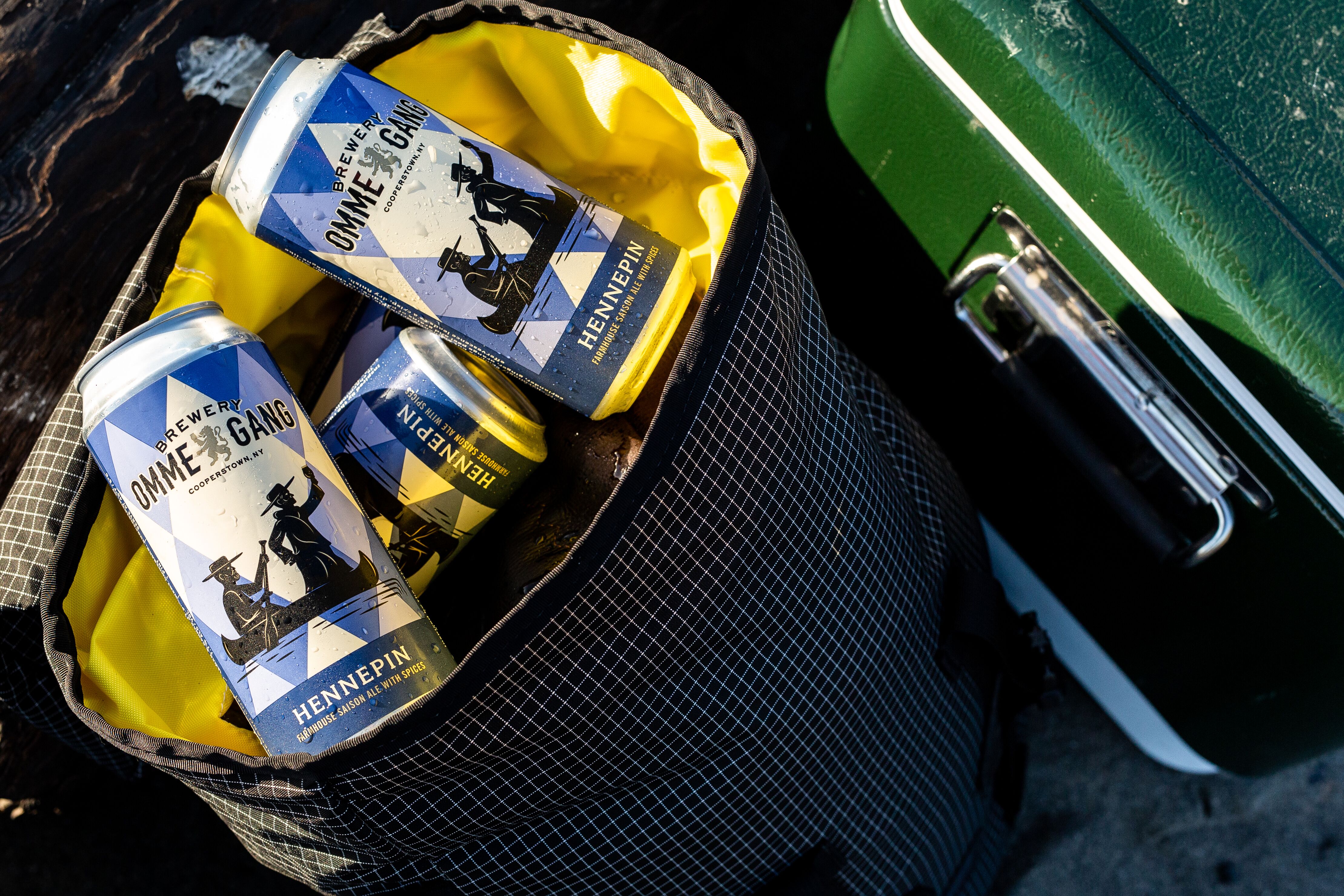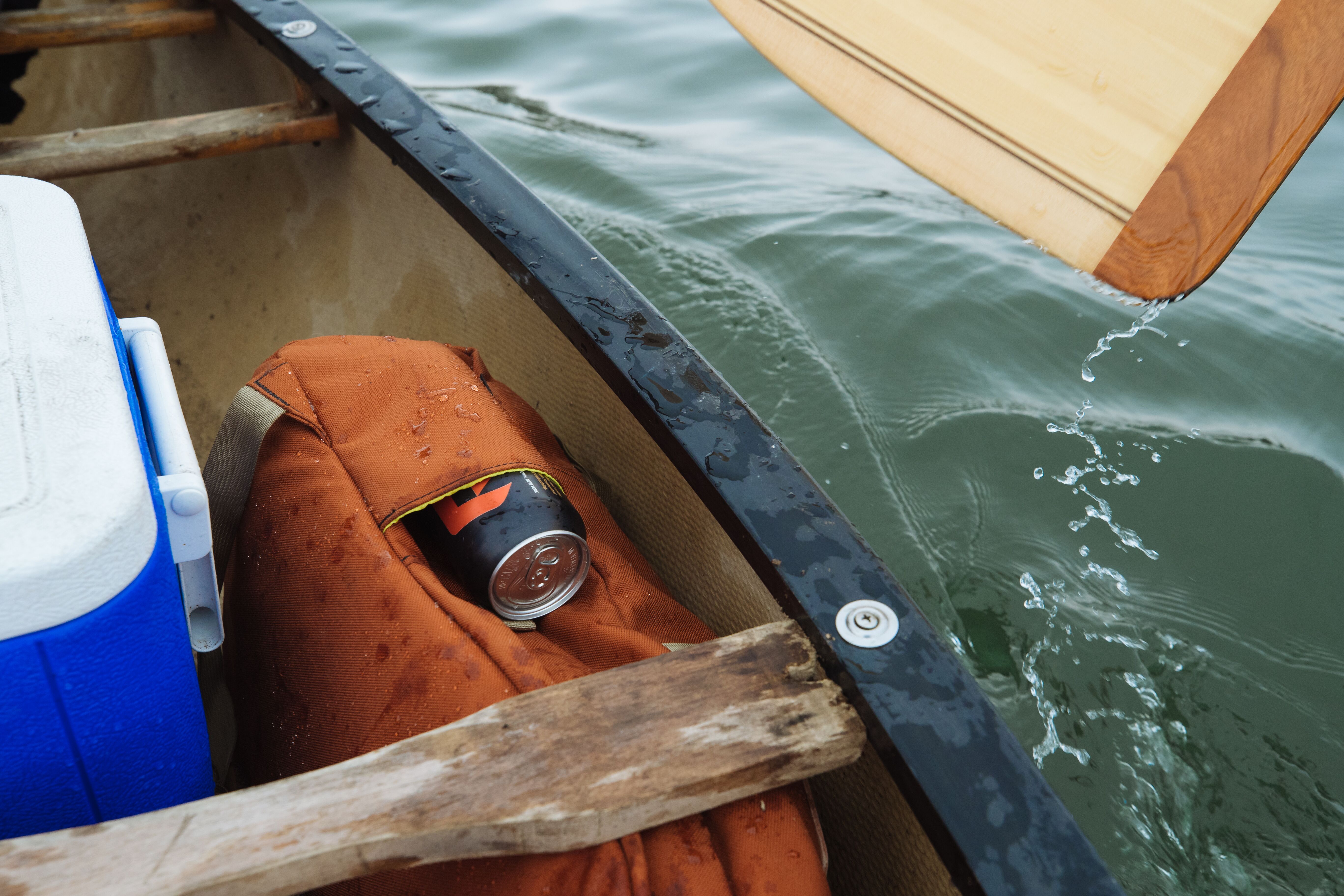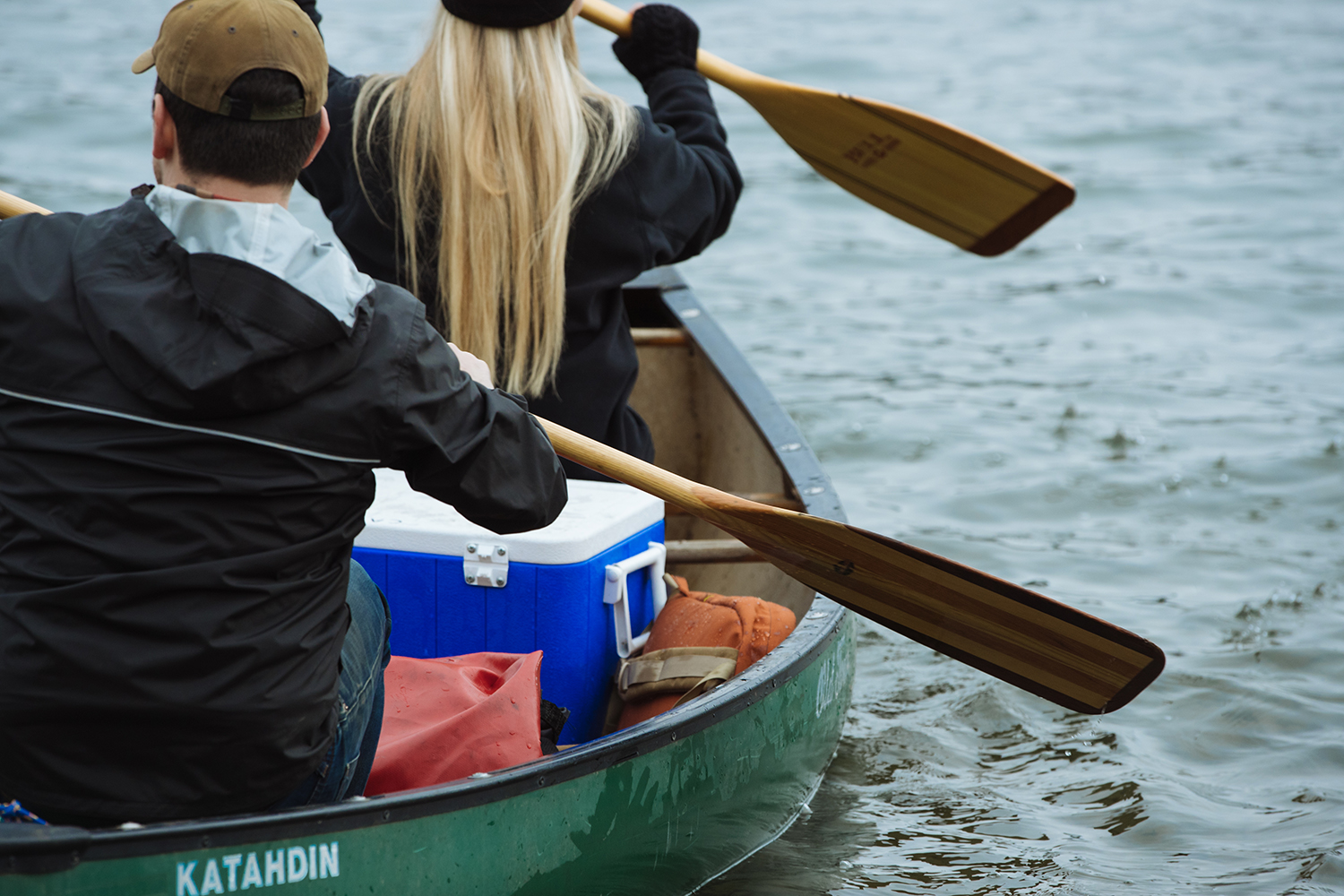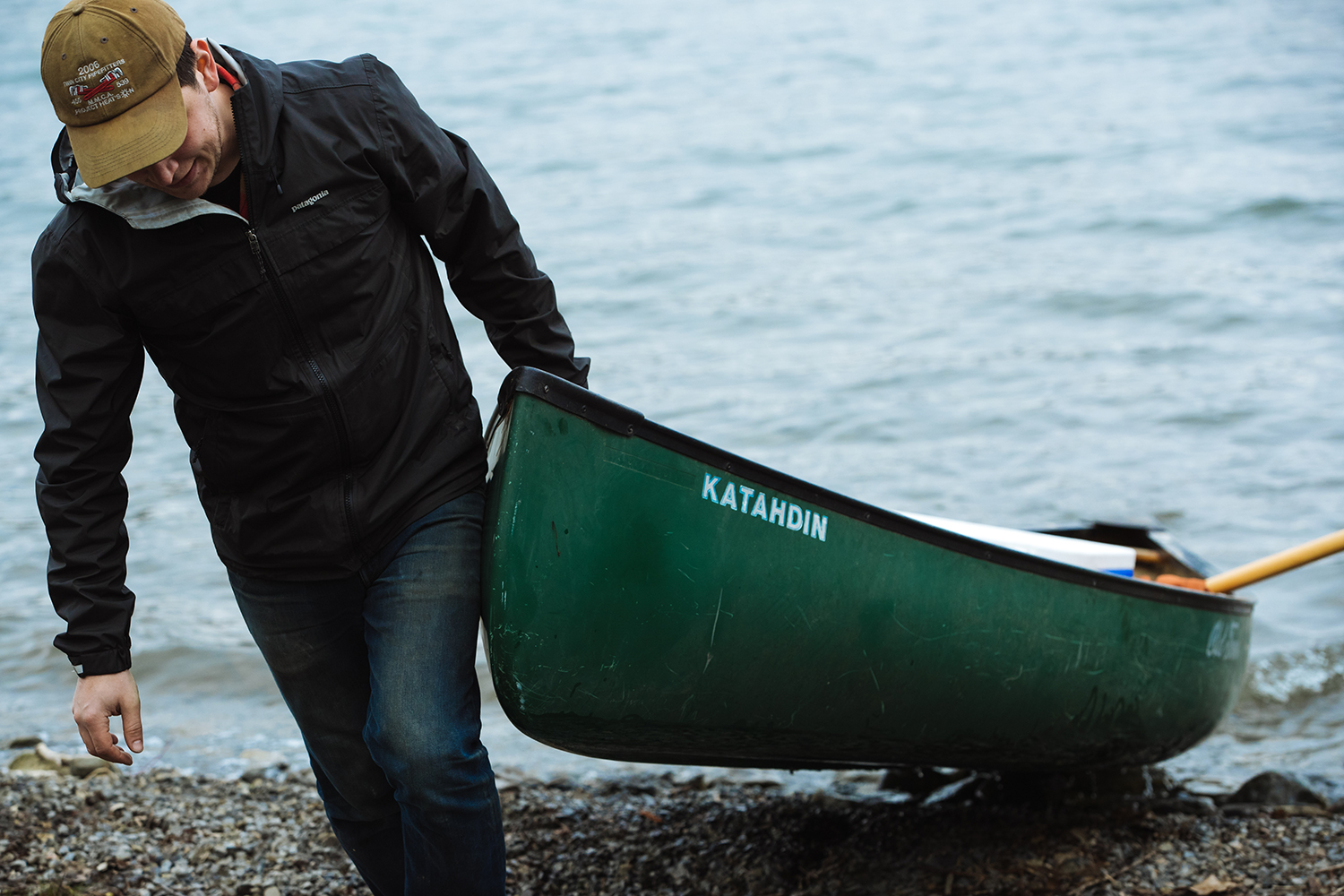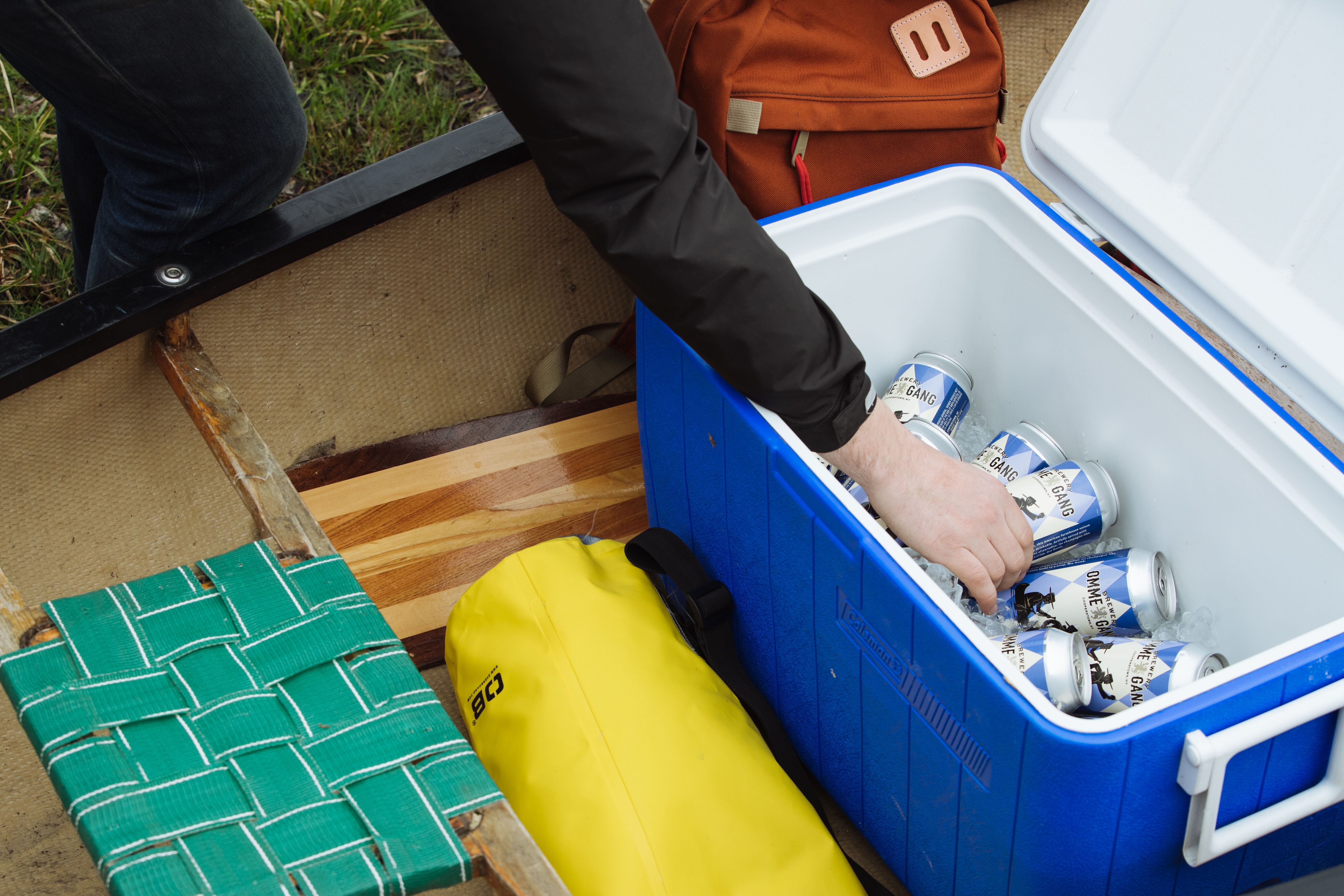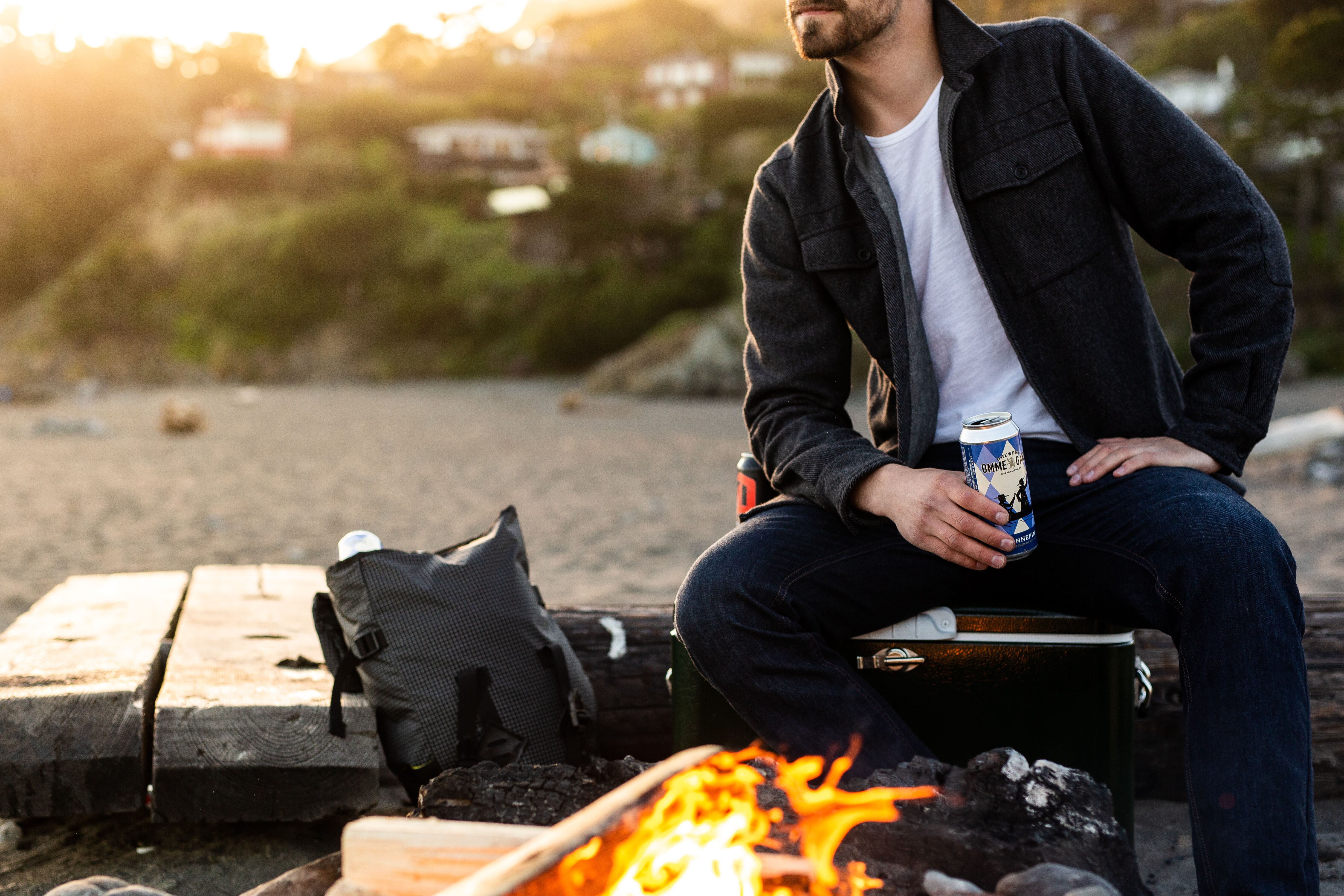6 Things You Need to Know Before Canoe Camping
Our buddies at Ommegang recently tipped us off on some great canoe camping near their brewery. Situated just south of Cooperstown in central New York’s Susquehanna River Valley on a historic American hop farm, Brewery Ommegang is just a 20-minute drive from the beautiful 4,046-acre Otsego Lake—perfect for getting on the water after enjoying the Summer Concert Series. So we sent expert canoe camper and Huckberry Ambassador Forrest Mankins to check it out and give us all a few pointers for our own trip. Read on for Forrest’s guide to canoe camping no matter where you go (though we definitely recommend Otsego Lake, with a cooler full of Ommegang, of course).
Trim your canoe
Trim refers to the angle at which your canoe rests in the water. Canoes can act as weather vanes in the wind, with the lighter and higher end always wanting to turn downwind, so a well-trimmed canoe that floats evenly will glide through the water more easily. To trim your canoe, it’s important to pack while the boat is floating for the best feedback. Keep heavy items like coolers as low and centered as possible. Then, place your lighter items accordingly, graduating from heavy to light on the front and back of the ice chest. Done right, this setup will keep your canoe trim, and perhaps just as important, the cooler’s central location makes it easy for everyone on board to grab a brew mid-paddle.
Prepare to get wet
Like it or not, you’re going to tip over at some point (blame your partner). We got a little rain on our otherwise idyllic day in Cooperstown, and even the normal spray from paddling on a windy day will soak anything and everything, so plan accordingly. For the things you don’t want to get soaked, use dry bags. I use a combination of different sizes, with a large bag holding clothes and camping gear, subbing in smaller bags for camera gear, food, etc. It’s also a good idea to tie all of your bags to your canoe with a length of rope, especially if you’re in moving water.
Carry an extra paddle
Notice how all of these tips seem like nothing more than common sense? Canoeing is a great test of common sense, and even expert canoers lose a few paddles throughout their career. The farther you are from shore, the more you’ll regret the loss—so don’t leave without a backup.
Safety first
Always bring a life jacket, no matter where, when, or with whom. In most places, it’s illegal not to wear one—and for good reason. Even if you’re a proficient swimmer, a sudden fall into cool water can result in cold shock response, which can prove fatal without a flotation device.
Always tie up your boat
My dad demanded this tip make the list after an experience as a young man in the Boundary Waters. After arriving at camp, he left his canoe about twenty yards from shore and went about setting up his tent. Then he saw his canoe floating out into the lake and had to swim out to retrieve it. Luckily it was summer, he is a strong swimmer, and the wind had only just started to take it. Tie the boat to something solid, no matter how far up shore you drag it.
Pack as if you’ll be stranded
Some more advice from my parents: Always bring rain gear—literally everywhere. I’ve been surprised at the number of times I’ve needed it when I would’ve bet money otherwise. Rain shells and rain pants can be lifesavers, keeping your base layers dry and the wind off your bones. Whenever we head out on a canoe trip, it is vital to pack as if you’ll be stranded for a night. It’s very possible that you’ll be out on the lake when the wind picks up so strongly that it would be foolish to stay on the water—so prepare for this scenario. In addition to rain gear, I always have fire starter, a space blanket, gloves, an energy bar, and base layer stored in the bottom of one of the dry bags. And while it’s certainly not required, it doesn’t hurt to throw in a few extra Belgian-style saisons for good measure.

